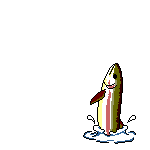 The River and its fisheries
The River and its fisheriesFish in the salmon family are almost all anadromous. That means they must breed in fresh water streams although they grow to adulthood in the oceans. In that sense salmon, like alewife and striped bass, are the opposite of eels that mature and fresh water and breed in the oceans. Some salmon species die immediately after spawning. The estimated value of the salmon fishery in 2007 was $818 million.*
Salmon, trout, whitefish, and their relatives generally need cold, clean waters of rivers to survive and breed. Because of their habitat needs, these fish indicate the quality of the streams in which these commercial and sport fish thrive. Six species of salmon and trout frequent US, Canadian, Russian and Japanese waters in the Pacific Ocean.
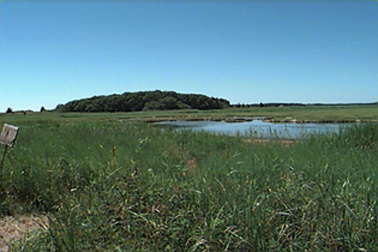
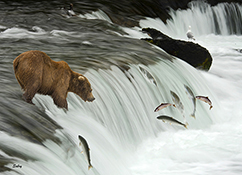
Salmon like many fish grow from fingerlings to adulthood by nourishing on the ample food available in estuaries and tidal marsh lined creeks, before they make the perilous journey upstream.
Salmon are the perfect sentinel species because their life-cycle reveals how the entire streams, river estuary are linked to the ocean in a creature that has spiritual, commercial and scientific values combined.
Particularly in the Pacific Northwest research shows that both the variety and  number of spawning salmon contribute to the amount of nitrogen required by thriving forests and that ingredient is derived partially by the soil bacteria and fungi from the decaying –post spawn—fish or the animals dependent on these annual fish runs.
number of spawning salmon contribute to the amount of nitrogen required by thriving forests and that ingredient is derived partially by the soil bacteria and fungi from the decaying –post spawn—fish or the animals dependent on these annual fish runs.
The reciprocal service that fish provide this forest with is nitrogen for tree growth. Trees shade the spawning grounds and modulate the river’s flow as to facilitate future salmon runs. Forests generate oxygen and draw carbon dioxide out of the air holding it for centuries in old growth.
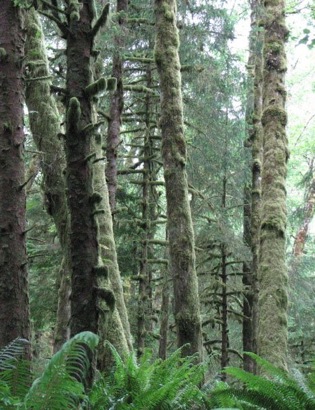
In the Hippocratic sense fresh air and ample water nourish and are nourished by such a place where salmon run freely to and from the sea indicating the ecosystem’s integrity.

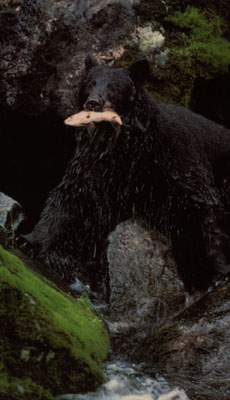 In short, the fish and the forest coexist better together than either one does separately.
In short, the fish and the forest coexist better together than either one does separately.
The five species of salmon are: Sockeye, Pink, Chum, Coho, and Chinook.
• Page to cite on the diversity of Salmonidae fish: Dewey, T. 2006. "Salmonidae" (On-line), Animal Diversity Web. Accessed December 25, 2008 at http://animaldiversity.ummz.umich.edu/site/accounts/information/Salmonidae.html.
Aquaculture raised salmon: Norway and Chile dominate production at 77 percent (Asche and Tveterås 2008). Atlantic salmon is the preferred aquaculture salmon species, followed by coho [one-tenth of aquaculture productionin recent years according to Asche and Tveterås (2008)]. The average price of aquaculture Atlantic salmon in 2006 was only about 25 percent of what was received in 1985. Technology and distribution logistics has largely been responsible for the reduction. As labor and capital costs have been reduced, feed cost burden as a proportion have risen, accounting for 52 percent in 2004. Capture fisheries still enjoy niche markets where concerns about aquaculture quality is a consideration."
The Wild Salmon Center, "North Pacific Salmon Fisheries Economic Measurement Estimates." December 2009, Portland, Oregon. p. 6.
Rivers | Forests | Alaska | Biological diversity